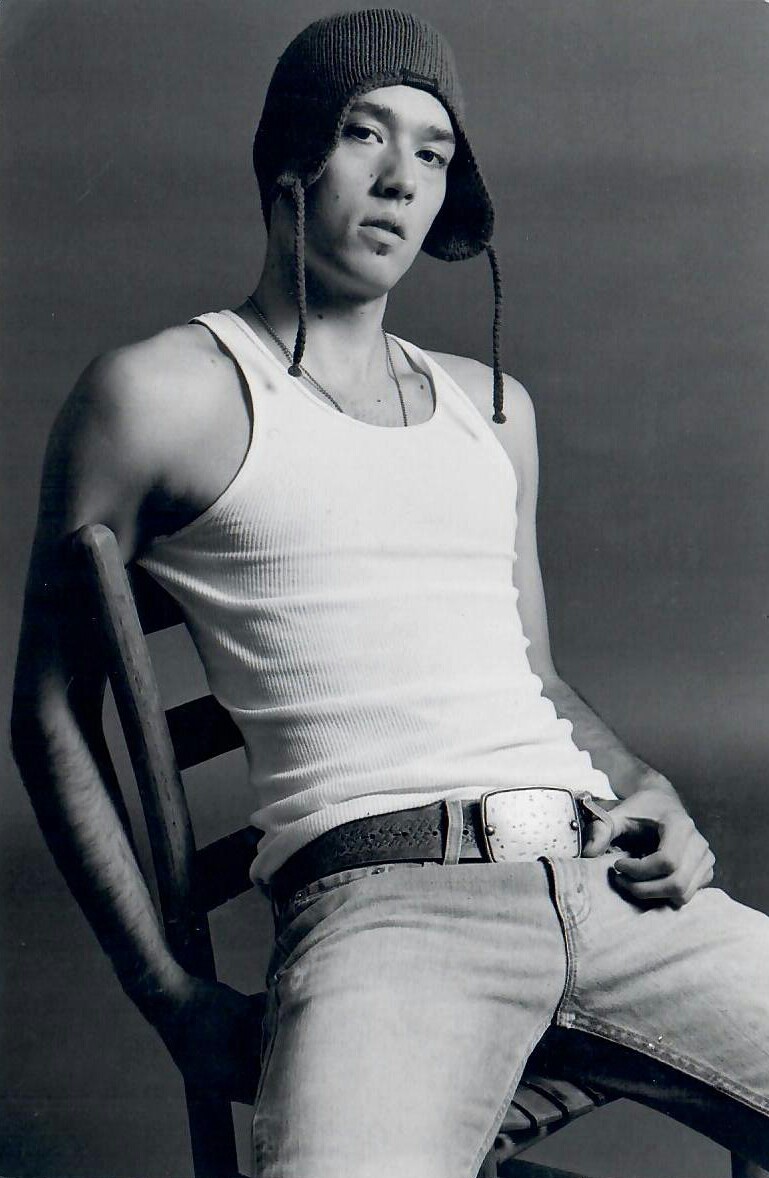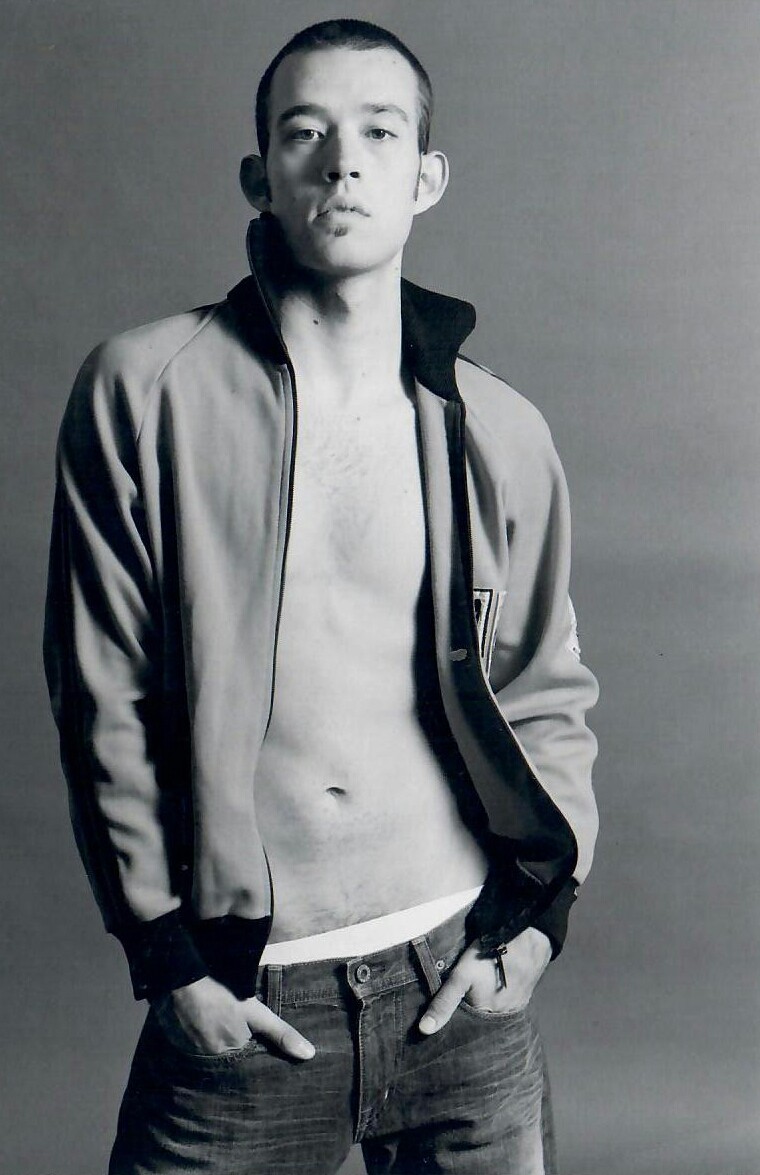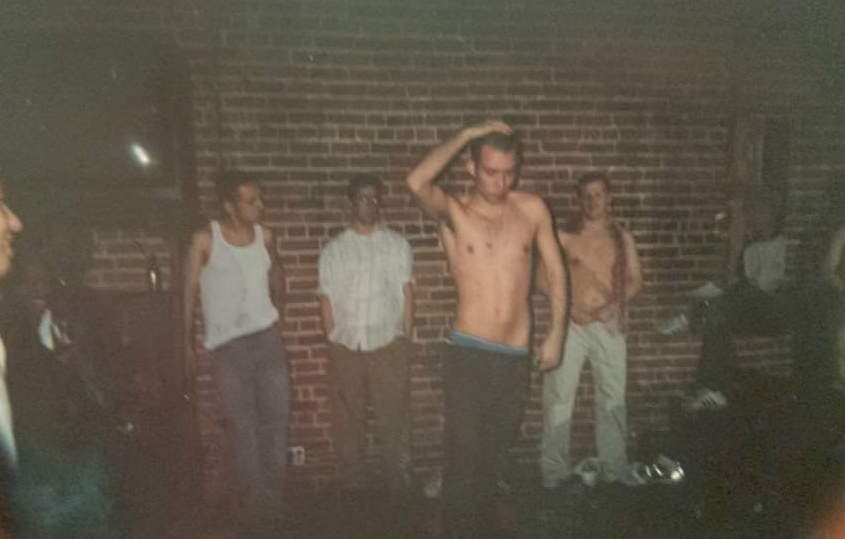The Mangenue
man-jǝ-nü n. aspiring male model, naif—me in the early 2000s
I’ve been avoiding Midtown West for a while, and now I remember why. The Mangenue is everywhere. The Mangenue is a simple young soul who moved to the big city with aspirations of stardom, banking on nothing more than his good looks and a virile young body. He cuts in front of me in line at Starbucks, sizes up sidewalk competition with looks of superiority, and tirelessly speaks to the caloric benefits of drinking vodka sodas. Though he has no formal training and hasn’t starred in a relevant stage production, The Mangenue assumes that because the peasants in his suburban hometown like all his pictures on Instagram, he is certainly already famous. And I know The Mangenue all too well — because I used to be him.
In 2003, I’d been living in London after leaving college in Seattle, determined to make my mark as a male model. After intensive research, I decided the only agency for me was Storm Model Management — the prestigious company that found and represented Kate Moss. Storm was the third-ranked agency in London, and its founder, Sarah Doukas, was well known for turning many of her models into legitimate working actors. I wasn’t sure if I would be a break-out actor, or break-out male model — but I knew Sarah would make me a star.

Before leaving, I stood in the mirror with my face slightly turned to the left. Which side would I display to the agency? I considered my right, which features a hooded eyelid and rounded nose tip, making my face appear soft, dewy and full. Or I could go with the left, with a sharper nose tip, making me appear striking, wise, and slightly more severe.
I was feeling aggressive, so I went with the left. Everywhere I walked, I would align myself so that store fronts would be to my favored side, and I could stare at my reflection in the window as patrons watched me walk by. I strutted through the front door of Storm with the confidence of Naomi Campbell carrying a handbag made from the soft hind of a former personal assistant. At the front desk, I slapped my pictures down in front of the receptionist.
“I’m here to show my modeling portfolio,” I said. She nodded while pawing through the pages, and landed on an image of me in low-rise jeans — my chest and a slight tuft of pubic hair exposed. I stood confidently, waiting for her to praise my effortless sex appeal.
“How shall I say this, darling?” she said with a lifted brow. “You’re in a jewelry store.”
The next day, after realizing that Storm Watches wasn’t looking for a new male hand model, I was relieved to find the real Storm Models. I assumed I’d be surrounded by chic women in all black, the men dressed in double-breasted suits and facial hair groomed for the early twentieth century. Instead, I sat alone in a brightly lit corridor, staring at the fresh pair of witch boots I had purchased in an exclusive Spanish boutique called Zara. A half hour later, a chipper young woman named Julie came through the door with my portfolio in hand.
“Hello, James. Your pictures are really good — and we carefully considered you. Unfortunately, we feel you’re too commercial for Storm.” She said the word commercial with an extra British snobbishness.
“Thank you for considering me,” I said in a daze.
“Have you tried looking for work in L.A.?”
No, but I was intrigued. I had never considered starring in my own TV commercial before! I used to love the girl from the Mentos ad that ripped her dress in half when she needed a quick fix. And didn’t that actress end up on “Dawson’s Creek?” Commercials — that was it! Julie must have thought I had something special in me that could sell a product in thirty seconds.
Three more agencies in London all had the same suggestion: I was made for the commercial world. I was disappointed that my bare chest wouldn’t be gracing the sides of double decker buses in Central London, but I couldn’t deny my excitement over the thought of my friends seeing me on American television. Why come to England to be discovered, when stardom was waiting at home? So I headed straight back to Seattle.

As a newly minted legal drinker, I quickly became one of Seattle’s most promising young stars in the early 2000s bar scene. While this mostly meant I wouldn’t pay for drinks if I was shirtless, I saw my newfound (and self-professed) prominence as the perfect opportunity to build my brand.
R Place was a cheesy gay bar near downtown with loud hip-hop nights, dollar beers, and a huge crowd. They also hosted the city’s premier amateur strip contest for men. As I wrote my name down, presuming that I’d win, I imagined the interviews I’d give explaining my dark past as a broke college student forced to enter strip contests just to make rent. “Those were hard times,” I’d say. “But I really feel I gained a special perspective on the objectification that female celebrities feel every day.” The industry would quickly endorse me as one of Hollywood’s leading male feminists.
“James, you’re up!” yelled Tito, the host, over booming speakers. Missy Elliot’s “Hot Boyz” began to thump on the speakers, and I could hear the crowd roar as I turned my back to them while pulling off my shirt. I realized what a wise choice I had made by purchasing a fashionable pair of Adidas wrestling boots in London, since they were now all I was wearing aside from my underpants. And I used them to climb to the top of a slippery brass pole.
“Get down James — that’s against the rules!” Tito rapped over Missy. But it was too late — I was swinging around that pole like Pam Anderson in Barb Wire, and the crowd was firmly on my side. I won the contest and $250, feeling infinitely rich. Any money in addition to the Sallie Mae loan I was living off of was another smart investment in my future — and now I could afford drinks after acting class.

But I was still intent on landing a modeling contract — so it was time to take my body seriously. With its cheap fluorescent lights, tacky gray curtains and masked nail technicians who only spoke Vietnamese, American Girls Nail Salon was the perfect place to spend my prize money on a secret chest waxing. Though I knew spending thirty-five dollars on a chest wax was a shrewd and necessary career decision, I was terrified that my worst childhood nightmare would come true: being skinned alive by Mileena from Mortal Kombat.
Skrrrrrrrrttttch — I looked down at the barren, purple wasteland that was formerly my chest. As the fluorescent lights flickered from the ceiling, small droplets of blood began to rise like pools of acid around my belly button, while random patches of hair still clung to their afterlife. Mileena began to carefully pluck the remaining hairs on my stomach with a tweezer, and I felt the buzz of my Nokia cell phone. It was a text from Jeffrey Lee, a well-connected friend and local fashion stylist.
“Great news James! I think I finally have a show for you!”

Zebraclub was an urban clothing boutique carrying hot brands like G Star Raw and Diesel, and had several locations in Seattle and Vancouver, British Columbia. Jeffrey informed me I would walk the show for their 2004 fall collection at Neighbours, a popular gay nightclub in Seattle. Only I’d be paid in clothing and gift certificates that totaled just under $200 — the professional equivalent of receiving a Starbucks gift card for Christmas.
Still in need of real money, I decided to make a quick buck before my catwalk debut. After several rounds of Long Island Iced Tea at R place, I entered the strip contest knowing I’d need to turn in a spectacular performance. I decided to show off my athletic prowess by jumping to the adjacent stage featuring the stripper pole, but in mid-air, I was reminded that my pants were still around my ankles.
“OOOOOOH!” the crowd roared. I was lying face down in front of several hundred people. “That bitch went dooooown!” exclaimed a twink in the front row. Tito announced my third-place finish and a $50 prize, and I knew I had deeply damaged my brand.

A week later at Zebraclub, Jeffrey and I gathered pieces together at a model fitting for the coming Nieghbours fashion show. I could barely walk from a severe bone bruise to my leg, and my stomach and chest were covered with ingrown hairs. Since I couldn’t fit my leg into slim black jeans and needed to incorporate my limp, I told Jeffrey that we’d go with a “slick hip-hop look.” I put on wide-legged Diesel jeans, covered my chest with a white Penguin vest and wore a backwards, plastic green visor. I would make my catwalk debut dressed as a gay Kevin Federline.

As I drove home from my first fitting as a real model, I couldn’t help but feel like my path to stardom was laid out in front of me and my 1988 Toyota Tercel. My muffler had fallen off earlier in the middle of a downtown Seattle intersection, but I was too excited by my burgeoning career to be bothered. As my car grumbled up Pike Street, I saw the muffler still sitting in the middle of the next intersection. It was rush hour, and amidst honking horns, I stopped my car and opened the door. I knew I was having a moment.
It was heavy and covered in black tar, but I’d show them how to pick up that muffler. I grabbed the steel tail pipe with one hand and the exhaust in the other; my triceps gleaming with sweat under the intent stare of halted traffic. I didn’t yet know what my future would bring, but I did know I was standing in front of a sea of flashing lights. I stood staring down the cars before me, daring them to run me over. With sixty pounds of tarred metal held perfectly upright from my crotch, I turned ever so slightly — and proudly gave them my left side.
